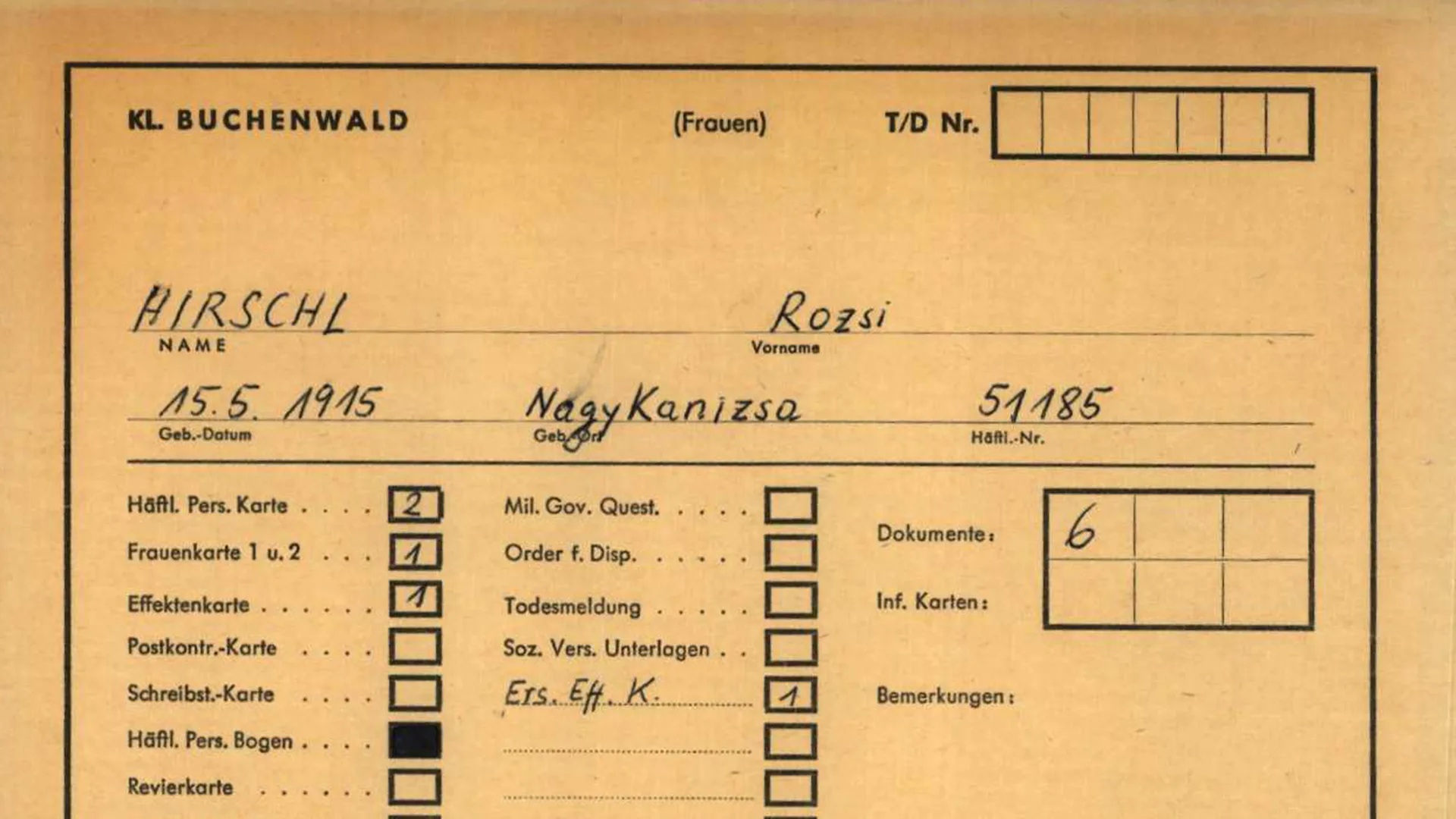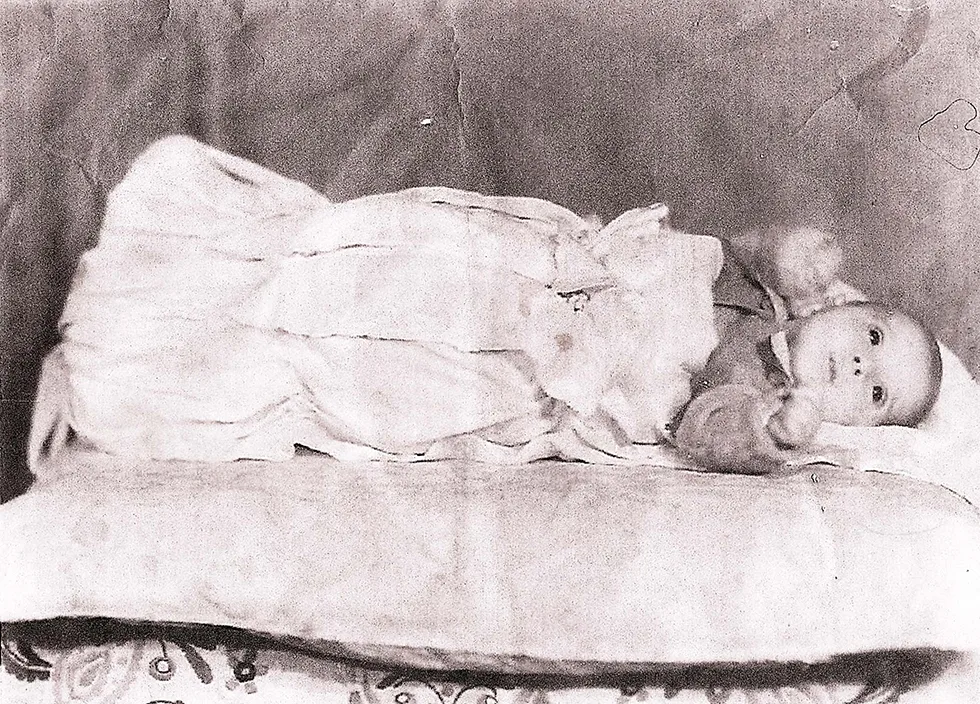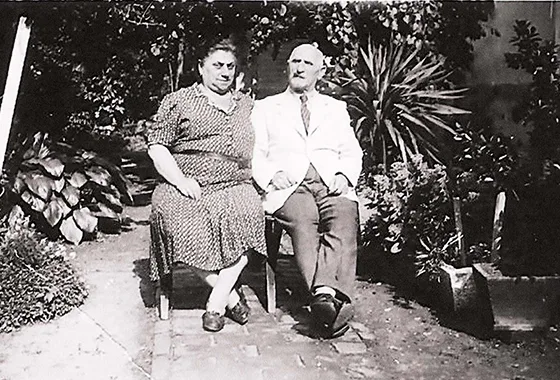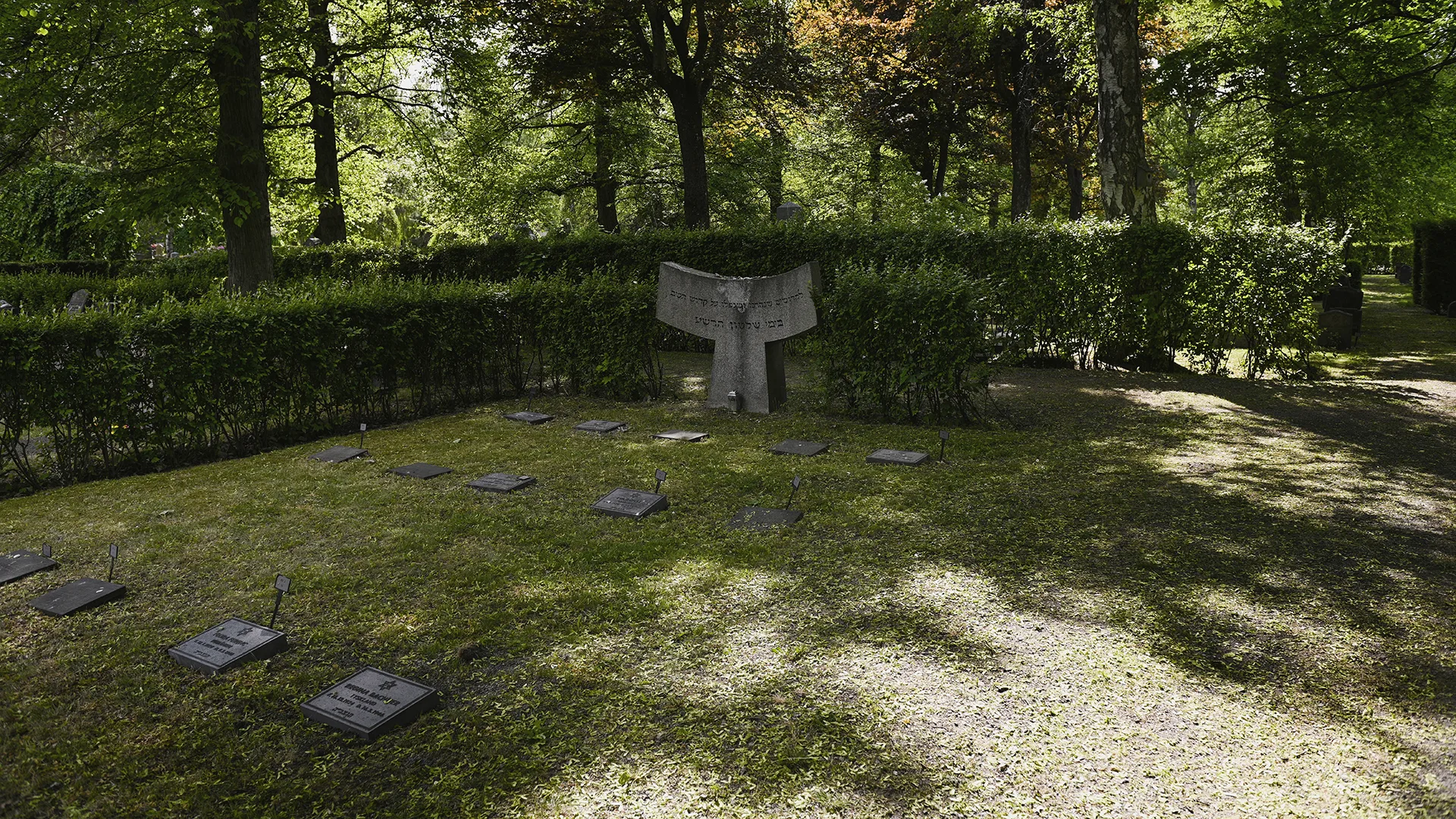Rozsi probably had four or five older sisters, with most of them living in Budapest. Her eldest sister Ema worked there as an office manager and her middle sister Margit worked as a waitress. Her sister Erzebet also lived in the capital with her husband Imre. Rozsi potentially had another sister named Gynla, also living in Budapest, but the surviving sources make it difficult to be absolutely certain of their family ties. The only sister who probably did not live in Budapest was Yanka who lived with her husband Ilesh in the town of Mako in eastern Hungary, on the border of Romania and Serbia.
After growing up in Nagykanizsa, a medium-sized town not far from the border with Croatia, Rozsi met musician Laszlo Hirschl, who grew up in a suburb of Budapest. They married and lived together in the Hungarian capital which had a large Jewish population at that time, close to 15 per cent of the city's inhabitants.
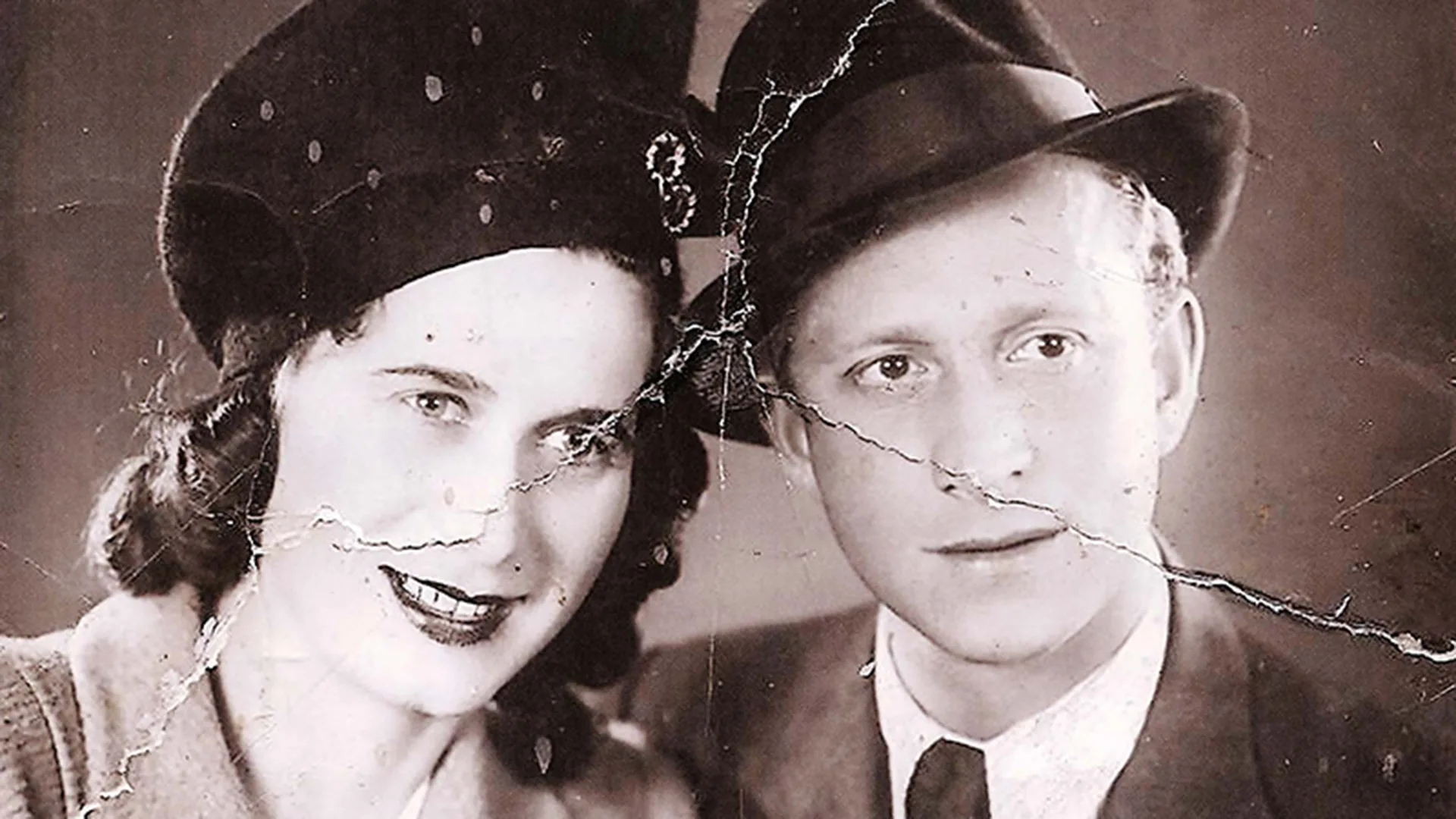
Increasing Pressure in Hungary
When war broke out in September 1939, Rozsi was 24 years old. Even before then, Hungary had been close to Nazi Germany and in 1940, just a year after the outbreak of war, the country allied itself with the Axis powers and Nazi Germany. Jews in Hungary were subject to discriminatory, anti-Jewish laws, inspired by the German Nuremberg Laws, which stripped Jews of their rights, prohibited them from doing certain jobs and marrying non-Jews, among other things. While these anti-Jewish laws made life difficult for Jews in Hungary, it was not comparable to what was happening at the same time to Jews in Poland, the Baltic States and Ukraine.
As far as we know, Rozsi and Laszlo were still living in Budapest and in the middle of the war, either in 1942 or 1943, and they had a little daughter, Edit. With Hungary now actively fighting for the Axis against the Allies on the Eastern Front, it began to forcibly recruit most of the capable Jewish men into labour battalions. These battalions were forced to perform hard and dangerous work, often on the frontline. Jewish men were subjected to physical violence and brutality in appalling conditions and nearly 30,000 Jewish men died in the labour battalions. It seems that not long after Edit's birth, Laszlo was arrested and sent to one of these battalions. He never came back. Laszlo seems to have been murdered around 1944, according to his relatives. Rozsi took little Edit and moved from Budapest to her parents' home in Nagykanizsa.
Hungary under German Rule
Despite severe pressure from the Nazis and its anti-Jewish laws, Hungary had refused to deport Hungarian Jews to death until spring 1944. The Hungarian government instead negotiated with the Allies after the heavy losses on the Eastern Front in 1943. In response, Nazi Germany invaded and occupied Hungary in March 1944. Immediately, the Germans established ghettos in major Hungarian cities, where the Jews were forced to live. This was all part of a plan by senior SS leader Adolf Eichmann to murder Hungarian Jews as quickly as possible.
Rozsi, her parents Mikhai and Sidonia and Edit were forced into the ghetto in Nagykanizsa, where they lived for over a month. Over the course of two days, May 16–17, the ghetto was emptied and Rozsi, her parents and Edit, as well as all the other inhabitants, were forced onto freight carriages with the final destination being Auschwitz. The deportation from Nagykanizsa was the very first deportation of Hungarian Jews. In just three months, over 400,000 Hungarian Jews were deported to Auschwitz, almost all of them directly to their death. The journey from Nagykanizsa took five days, and we know from the testimony of other Hungarian Holocaust survivors that the journeys were pure suffering, in overcrowded freight carriages without enough air, food and water. Immediately upon arrival at Auschwitz, Rozsi was probably separated from her parents and young daughter, who was probably murdered immediately upon arrival, in an Auschwitz-Birkenau gas chamber. Edit was one or two years old when the Nazis murdered her.
From Concentration Camp to Concentration Camp
Rozsi was selected to work and after a few months in Auschwitz she was sent to one of the labour camps of the Buchenwald concentration camp, where she arrived in October 1944. She ended up in Essen, western Germany, at a factory of the steel and munitions company Krupp. Many survivors of slave labour in Krupp's factories testified after the war to the horrendous working conditions. Finally, in early April 1945, Rozsi was transferred to the Bergen-Belsen concentration camp.
Thousands upon thousands of Jews had been transferred to Bergen-Belsen from other concentration camps as the Allied forces came closer and closer. Many prisoners had been forced on death marches in the bitter January and February cold before those who survived made it to Bergen-Belsen. In the overcrowded and disorganised camp, diseases such as dysentery, diphtheria, typhus, and tuberculosis spread and killed thousands. Despite the difficult circumstances, Rozsi had remained relatively healthy until her arrival at Bergen-Belsen, but soon became severely ill with diarrhoea and fever, also suffering from severe malnutrition.
Liberation and the time in Sweden
On the April 15, 1945, Bergen-Belsen was liberated by British forces. At that time, the camp held over 60,000 prisoners, most of them Jewish and the majority in a terrible state of starvation and disease. Thousands of dead prisoners were lying unburied in the camp. Rozsi and other surviving prisoners were moved out of the camp and received medical care. Meanwhile, the Allied forces tried to register all survivors.
Rozsi was one of over 9,000 survivors brought to Sweden for treatment by UNRRA transportation. After a period in the transit camp and the Swedish field hospital in Lübeck, a seriously ill Rozsi was taken to Sweden on the S/S Kastelholm on the July 11, 1945. The Kastelholm docked in Stockholm after a four-day voyage. Rozsi and many of the other critically ill were immediately transported to the emergency hospital in Sigtuna. She was admitted to the hospital with tuberculosis and typhus. Soon after, on the August 21 the same year, she was transferred to Söderby Hospital, south of Stockholm. She remained there until the December 9, 1946, when she died at the age of 31.
Rozsi was not the only member of her family alive at liberation. Four of her sisters had also survived. Erzebet and Yanka both miraculously survived the Holocaust in Budapest and its ghetto. After the war, Erzebet remained in Budapest until she passed away at the age of 103 in 1993. Yanka also remained in Budapest until she died in 1974. Her daughter, Ilana, moved to Israel and at Yad Vashem she registered a large part of the family murdered during the Holocaust. Through her there are preserved photographs of Rozsi, Laszlo, their daughter Edit and Rozsi's parents. Her sister Margit was, as far as we know, deported by the Germans but survived the Holocaust. She was released at the end of the war and settled in Israel.
Rozsi's oldest sister, Ema, was also deported to Auschwitz and survived. She was probably taken to other concentration camps but rescued to Sweden by the white buses of the Swedish Red Cross. She arrived in Sweden on the May 5, 1945, and was placed at the school for girls in Landskrona. After the war, Ema contacted the World Jewish Congress in an attempt to find her relatives. Unfortunately, it is unclear whether she managed to discover that her younger sister Rozsi survived and came to Sweden. We therefore do not know if they were ever reunited.
Rozsi's route
The map shows the places Rozsi was forcibly transferred or travelled to, from Nagykanizsa where she was born to the Northern Jewish Cemetery. Click on the information symbol to see all the locations, listed in chronological order.
About Rozsi Hirschl
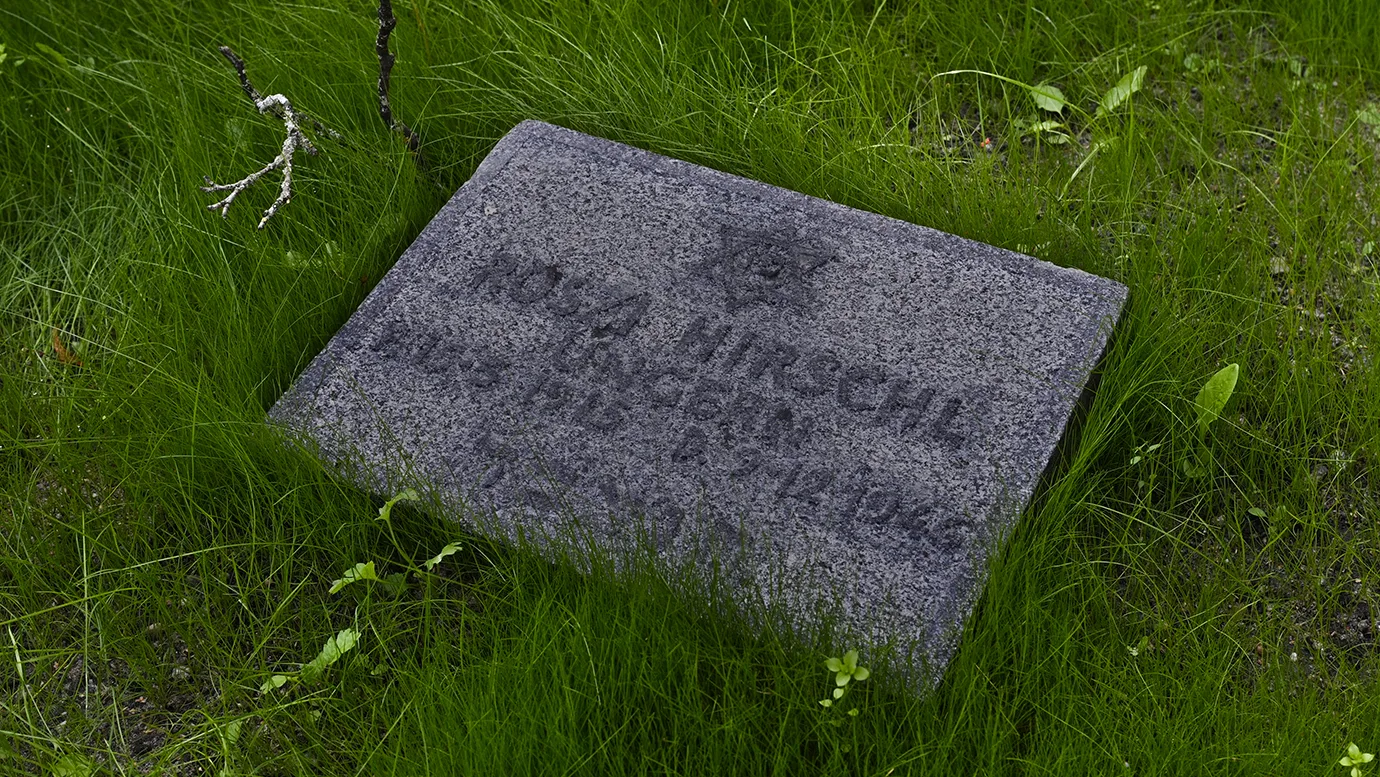
About Rozsi's husband Laszlo Hirschl
About Rozsi's daughter Edit Hirschl
About Rozsis father Mikhai Singer
About Rozsis mother Sidonia Singer
About Rozsis sister Ema Singer
About Rozsis sister Yanka Koti
About Rozsis sister Elizabet Fürst
About Rozsis sister Margit Singer
Learn more about the fates of other
Here you will find links to the "Förlorade röster" [Lost Voices] collection page as well as links to all the personal texts, listed by surname.
